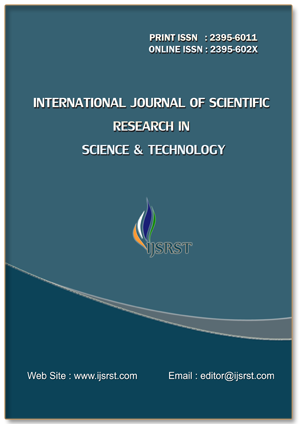Growth and Yield Performance of Pleurotus Florida (Oyster Mushroom) On Different Agriculture Substrates
DOI:
https://doi.org/10.32628/IJSRST2411452Keywords:
Oyster Mushroom, Agriculture Substrate, Pleurotus FloridaAbstract
Mushrooms are one of the most loved foods not only for its exotic taste but also for the benefits with which it comes. They are low in salt and sugar and are a rich natural source of Vitamin D. They contain 25-50% proteins on dry weight basis. The percentage of proteins in mushrooms is much higher than in cereals, pulses, fruits or vegetables. The proteins of mushrooms contain all essential amino acids and their quantity is higher than in the egg. Pleurotus florida (Oyster Mushrooms) are saprophytic fungi that are macro edible mushroom. It may be cultivated on a variety of substrates with acceptable food quality and quantity. The present study was carried out using the different agricultural substrate (Wheat straw, Bajra, Soyabean, Pigeon pea, Chickpea, Sugarcane Maize and Moong) to evaluate the effect of different agriculture substrate on growth of Mycelium, Yield and Biological Efficiency of Pleurotus florida (Oyster mushroom). The yield and Biological Efficiency for Pleurotus florida (Oyster mushroom) on different agriculture substrates was compared. Soyabean substrate was found to be a potential substrate for cultivation of Pleurotus florida (Oyster mushroom). Biological Efficiency on Soyabean 50% while Chickpea- 45%, Pigeon pea- 36%, Moong- 35%, Bajra- 30% Wheat Straw- 25%, Maize- 17% and Sugarcane- 15%. Pleurotus florida (Oyster mushroom) yielded better on substrate Soyabean – 500g. Hence it was concluded that Soyabean gives higher yield as compared to Chickpea, Pigeon pea, Moong, Bajra, Wheat Straw, Maize and Sugarcane substrate.
📊 Article Downloads
References
Salami, A. O., Bankole, F. A. and Olawole, O., I. (2016). Effect of different substrates on the growth and protein content of Oyster Mushroom (Pleurotus florida). International Journal of Biological and Chemical Sciences, 10(2): 475-485. DOI: https://doi.org/10.4314/ijbcs.v10i2.2
Sawiñska, A. and Kalbarczyk, J. (2011). Evaluation of Enzymatic Activity of Pleurotus ostreatus. Regarding Stages of Mycelium Development. Acta Scientiarum Polonorum Hortorum Cultus, 10(2): 195-202.
Syed, A., A., Kadam, J., A., Mane, V., P., Patil, S., S. and Baig, M.M.V. (2009). Biological efficiency and nutritional contents of Pleurotus florida (Mont.) Singer cultivated on different Agro wastes, Natural Science, 7(1): 44-48.
Etich, O., K., Nyamangyoku, O., I., Rono, J., J., Niyokuri, A., N. and Izamuhaye, J., C. (2013). Relative performance of Oyster Mushroom (Pleurotus florida) on agro-industrial and agricultural substrate. International Journal of Agronomy and Plant Production, 4: 109-116.
Karthick, K. and Hamsalakshmi. (2017). Current scenario of Mushroom industry in India. International Journal of Commerce Management Research, 3(23): 47-73.
Sher, H., Al-Yemeni, M., Bahkali, A., H., Sher, H. (2010). Effect of environmental factors on the Yield of selected Mushroom species growing in two different Agro ecological zones of Pakistan. Saudi journal of Biological Sciences, 17(4): 321-326. DOI: https://doi.org/10.1016/j.sjbs.2010.06.004
Khare, K., B., Mutuku, J., M., Achwania, O., S., Otate, D., O. (2010). Production of two Oyster Mushrooms, Pleurotus sajor-caju and Pleurotus florida on supplemented and un-supplemented substrates. International Journal of Agriculture Applied Science, 6, 4-11.
Chang, S., T., Lau, D., W. and Cho, K., Y. (1981). The cultivation and nutritional value of Pleurotus sajor-caju. European Journal of Applied Microbiology and Biotechnology, 12: 58-62. DOI: https://doi.org/10.1007/BF00508120
Mane, V., P., Patil, S., S., Syed, A., A. and Baig, M., M. (2007). Bioconversion of low quality lignocellulosic agricultural waste into edible protein by Pleurotus sajor-caju (Fr.) Singer. Journal of Zhejiang University, 8: 745-751. DOI: https://doi.org/10.1631/jzus.2007.B0745
Emuh, F., N. (2010). Mushroom as a purifier of crude oil polluted soil. International Journal of Science and Nature, 1: 127-132.
Gregori, A., S., Vagelj, M. and Pohleven, J. (2007). Cultivation techniques and medicinal properties of Pleurotus florida. Food Technology and Biotechnology, 45: 238-249.
Crisan, E., V. and Sands, A. (1978). Nutritional value in: The biology and cultivation of edible Mushrooms. London, Academic Press Inc., 2: 137-165 DOI: https://doi.org/10.1016/B978-0-12-168050-3.50012-8
Nagaratna, G., K. and Mallesha, B., C. (2007). Use of vermicompost as casing material for cultivation of Milky Mushroom. Mushroom Research, 16(2): 81-83.
Bendre, A. and Kumar, A. (2005). A text book of practical botany Vol.1, 8th edition., Rastogi Publications.
Bano, Z. (1976). Nutritive values of Indian mushrooms. Sci. 1(2): 473-484.
Khan, S., M., Kausar, A., G. and Ali, M., A. (1981). Yield performance of different strains of Oyster Mushrooms (Pleurotus spp.) on paddy straw. Pakistan Mush SciXI Sydney. (1): 667-75.
Nithyatharani, R., Kavitha, U., S., PG, S. (2018). Cultivation of Oyster Mushroom using different substrates. Int. J Creat. Res. Thoughts, 6(1):332-337.
Gireesh, C., Santosh, K., Amarendra, K. and Baby, K. (2015). Effect of different substrates on growth and yield of Oyster Mushroom (Pleurotus sajor-caju) in eastern parts of Bihar. Mushroom Res., 24(2):93-96.
Sangeetha, K., Senthilkumar, G., Panneerselvam, A. and Sathammaipriya, N. (2019). Cultivation of Oyster Mushroom (Pleurotus sp.) using different substrates and evaluate their potentials of antibacterial and phytochemicals. Int. J Res. Pharm Sci., 10(2):997-1001. DOI: https://doi.org/10.26452/ijrps.v10i2.371
Dehariya, P. and Vyas, D. (2013). Effect of different Agro-waste substrates and their combinations on the yield and biological efficiency of Pleurotus sajor-caju. IOSR J Pharm. Biol. Sci., 8(3):60-64. DOI: https://doi.org/10.9790/3008-0836064
Neupane, S., Thakur, V., Bhatta, B., Pathak, P., Gautam, B., B. and Aryal, L. (2018). Performance of different substrates on the production of Oyster Mushroom (Pleurotus florida) at Gokuleshwor, Darchula. Int. J Sci. Res. Publ., 8(6):231-240. DOI: https://doi.org/10.29322/IJSRP.8.6.2018.p7832
Downloads
Published
Issue
Section
License
Copyright (c) 2024 International Journal of Scientific Research in Science and Technology

This work is licensed under a Creative Commons Attribution 4.0 International License.
https://creativecommons.org/licenses/by/4.0




